Last updated: May 6, 2022
Article
Breeding bird monitoring at Valley Forge National Historical Park: 2019 status and trends
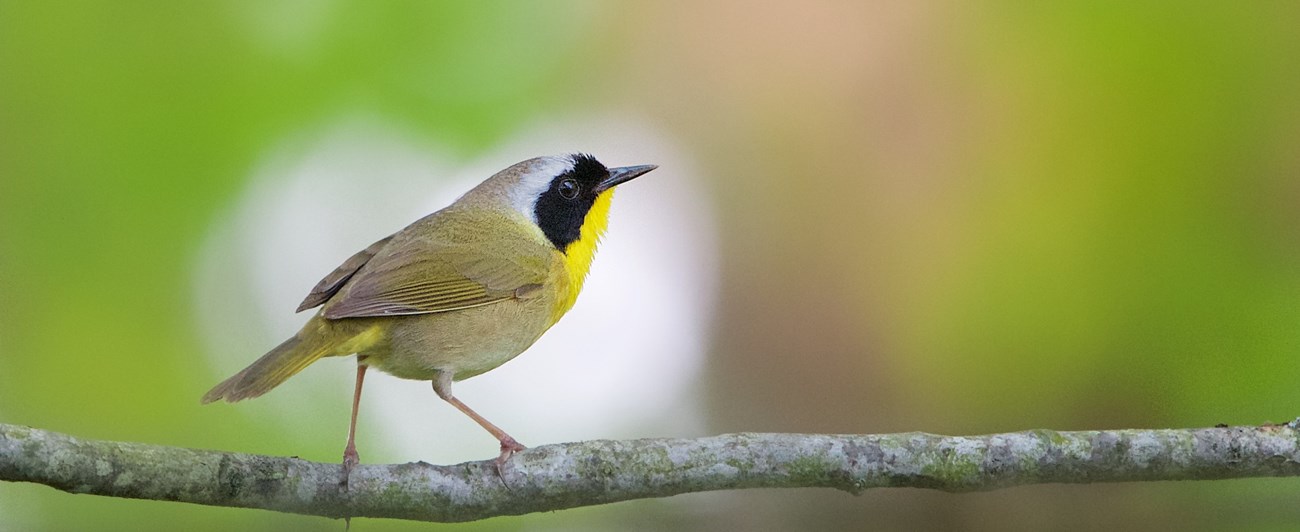
Monitoring highlights
- During the summer of 2019, ten volunteers conducted 233 surveys at 78 sites across the park.
- Several species of regional concern were documented in relatively high numbers, including field sparrows, eastern towhees, and wood thrushes.
- Forest bird community index scores suggest moderate ecological health of park forest bird communities.
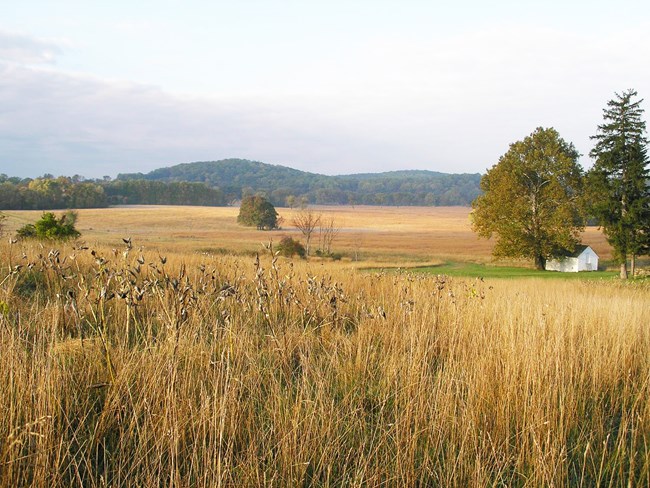
Introduction
For the last ten years, the scientists of the National Park Service’s Mid-Atlantic Network have worked with skilled local volunteers to monitor bird populations in national parks across the mid-Atlantic region. The information gathered is used to improve our understanding of the relationships between breeding birds, available habitats, and park resource management. The goal of the program is to develop the best available science so national parks can better understand and protect their resources. This brief provides a summary of 2019 breeding bird monitoring results for Valley Forge National Historical Park.In the summer of 2019, ten volunteers conducted 233 surveys at 78 sites across the park. During a survey, volunteers documented every bird heard or seen over a ten minute period. Sites in both forest and grassland habitat were visited multiple times during the breeding season.
For years, Valley Forge has been working to increase the acreage of native warm-season grasses to benefit birds. Results from 2019 show that some grassland associated birds, like field sparrows — a regional species of conservation concern — are relatively abundant (see Species of Regional Concern, below).
Species of Regional Concern
The Partners in Flight Program is a network of organizations involved in bird conservation in the Western Hemisphere. This program has identified a number of bird species that are declining and facing increasing threats across the mid-Atlantic region. These birds are of particular interest to park managers, and 19 species of regional concern were observed during 2019 bird monitoring.
Below are the top ten most observed species of regional concern documented in the park in 2019:
| Common name | Number of observations |
|---|---|
| Field sparrow | 200 |
| Eastern towhee | 121 |
| Wood thrush | 115 |
| Northern flicker | 66 |
| Eastern wood-pewee | 60 |
| Eastern kingbird | 38 |
| Eastern meadowlark | 34 |
| Chimney swift | 31 |
| Yellow-billed cuckoo | 7 |
| American kestrel | 4 |
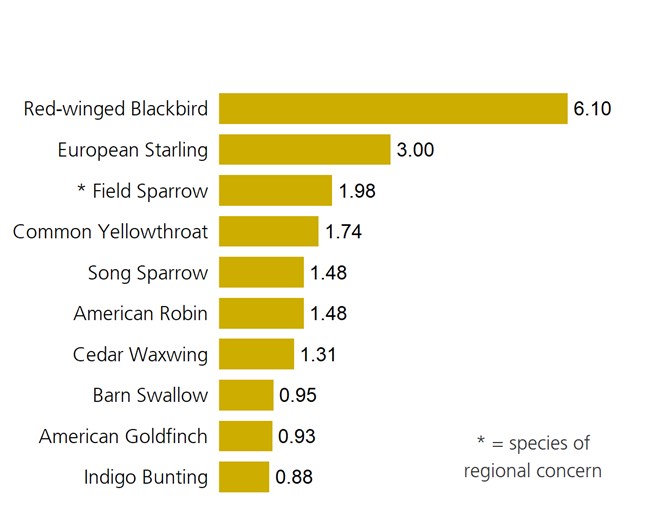
Grassland Monitoring
Despite population declines of more than 50% across the Northeast, field sparrows were the 3rd most common bird observed in grasslands at the park (Figure 1). Other abundant native birds observed in grassland sites were red-winged blackbirds, common yellowthroats, and song sparrows. Continued and improved management of warm-season grass meadows should support an increase in grassland-dependent species that are currently very rare at the park, like grasshopper sparrows.
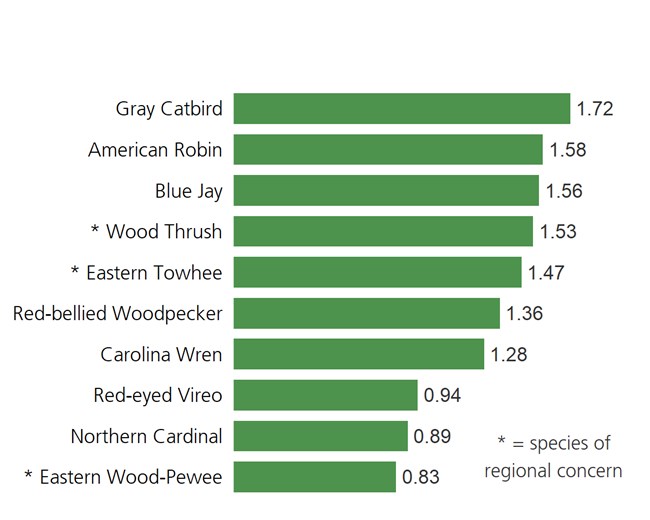
Forest Monitoring
The most abundant bird in forested monitoring sites in 2019 was the gray catbird, which is a common and widespread species (Figure 2). Interestingly, the 4th most common forest bird was the wood thrush, a species of regional conservation concern. Wood thrushes depend on larger intact forest ecosystems. Given the increasing urbanization occurring around the park, wood thrush abundance in Valley Forge shows the importance of park forests for local bird populations.
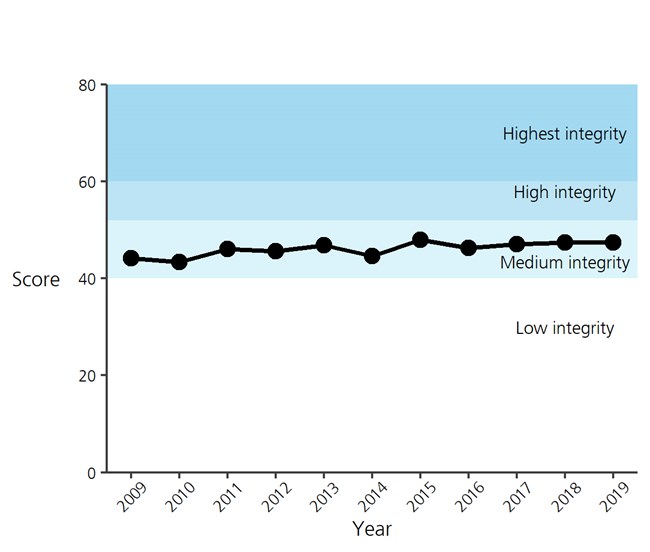
Forest Bird Community Index
Scientists can study the abundance of all the bird species in an area to determine the overall health of the bird community. The forest bird community index score (O’Connell et al., 2000) for Valley Forge shows that the forest bird community in the park is moderately healthy (i.e. has “medium integrity”; Figure 3). Given the park’s relatively small size and the surrounding urbanized environment, it may be difficult for the park to support a full forest bird community. That said, the park does provide a forested refuge from surrounding development and maintenance of healthy forest habitat is important to local bird communities.Click here for a printable pdf of this article.
